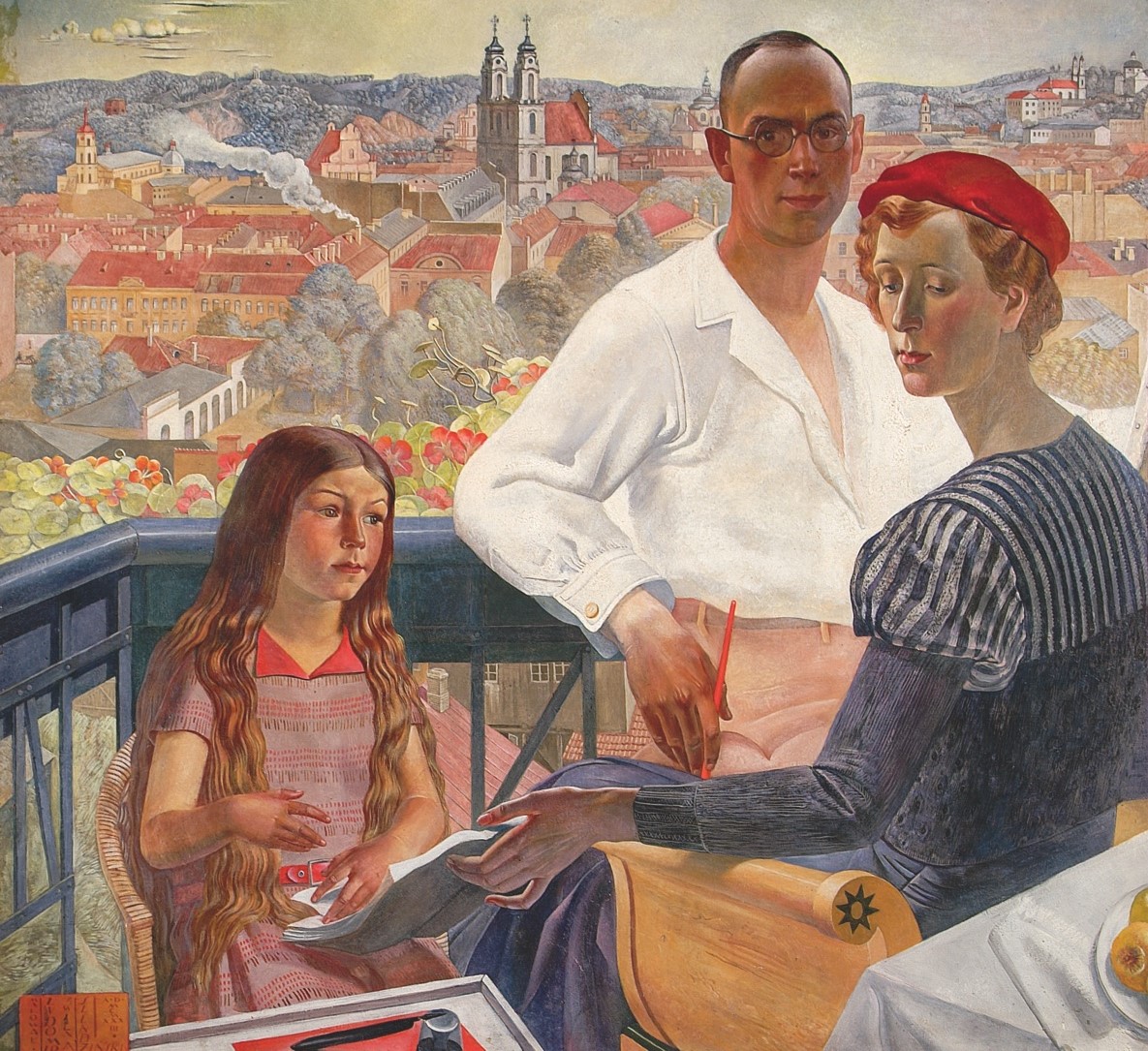It’s doubtful if any city in Europe in the early-to-mid 20th century can have changed hands so many times and meant so much to such a large number of different communities as Vilnius. The exhibition Vilnius, Wilno, Vilne 1918–48: One City, Many Stories recently featured at the National Gallery of Art in Vilnius, and previously at the National Museum in Kraków, a collaboration between Lithuanian and Polish curators (Giedrė Jankevičiūtė and Andrzej Szczerski), gives a nuanced and complex glimpse into the overlapping visual languages of the city during this fascinating time. In the years after World War I, Vilnius spent stretches, some very short, under German, Lithuanian, Soviet and Polish control – as well as briefly being part of the short-lived Polish puppet state the Republic of Central Lithuania. In 1922, the city and the Republic of Central Lithuania was incorporated into Poland, where it remained until the outbreak of World War II; Lithuania had broken off diplomatic relations with Poland on the republic’s establishment.
These conflicts and shifts in government radically affected the ethnic make-up of the city, but throughout there were significant local communities of Lithuanians, Poles, Jews and Belarusians. Moreover, a lively and often innovative artistic scene was active throughout the upheaval – Poles were the most visible, but considerable contributions were made by artists from all the main communities. This period in the city’s history has often been neglected in Lithuanian historiography, due not only to the sensitivities involved but also the fact that relevant artefacts are now widely dispersed between several countries.
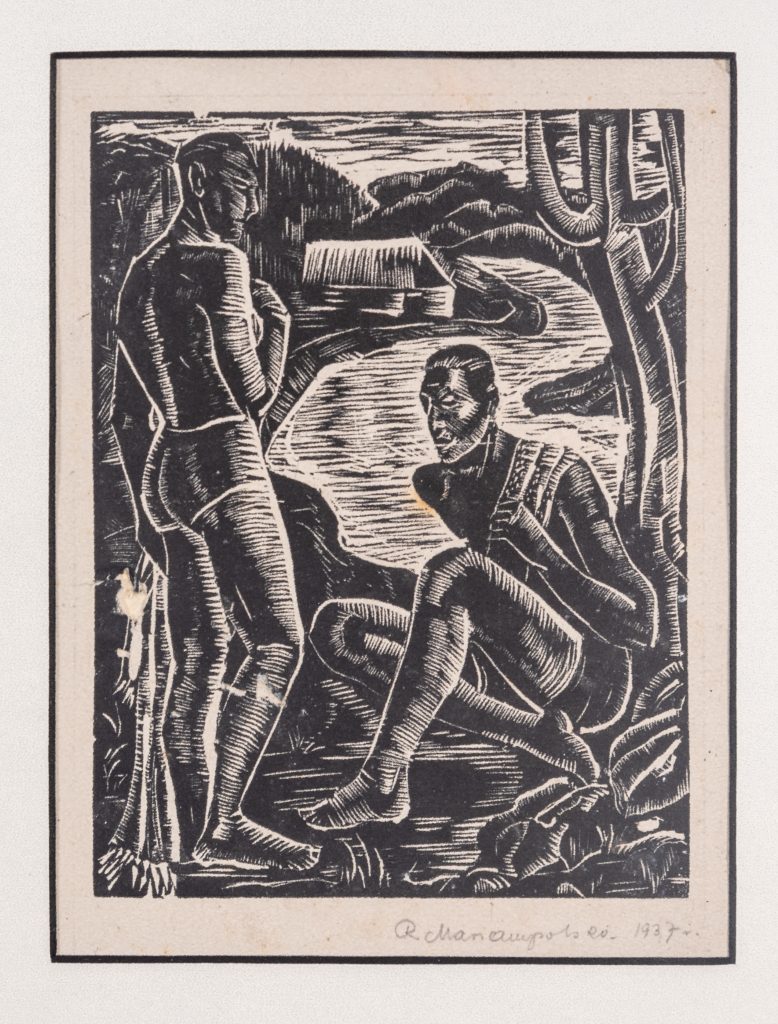
The scope of the exhibition goes beyond purely creative art, including not only Polish tourism posters, but also propaganda pictures from both the Polish side, which considered Vilnius (Wilno in Polish) its due as a then predominantly Polish-speaking city, and the Lithuanian side, which claimed Vilnius as the historic capital of the Grand Duchy of Lithuania, each painting their opponent in the blackest terms. And there were other ways that the different communities stressed their claims and their favoured narratives through culture: landscape scenes emphasising various locations and sides of the city, and representations of figures claimed by multiple communities, such as a sculpture of the Polish national poet Adam Mickiewicz (Adomas Mickevičius in Lithuanian). The end of the period sees renewed turbulence: the Soviet invasion of Poland, in collaboration with Nazi Germany, saw Vilnius briefly transferred to Lithuanian sovereignty, before Lithuania itself was absorbed into the Soviet Union. The Nazi invasion and the Holocaust led to the almost total destruction of the centuries-old Jewish community, and the renewal of Soviet occupation saw resettlement of many local Poles to the now-Communist state of Poland. Deep Baltic spoke to Giedrė Jankevičiūtė about the period and how it’s perceived today, and the experience of curating the exhibition.
Could you give us a short overview of the themes in the exhibition?
The exhibition’s narrative was divided into seven parts. It explores the role of visual propaganda in the struggle for Vilnius between 1919 and 1920 and the subsequent appropriation of the city’s iconic landmarks for political messaging, both in the Polish and the Lithuanian contexts. The exhibition also delves into artistic depictions of Vilnius, encompassing its urban landscapes and daily life, and portraits of the artists themselves, as well as glimpses of the avant-garde. This visual narrative is completed by a chapter dedicated to nostalgic visions of the city that disappeared in the wake of the war. In other words, the narrative proposed reveals the diverse stories of Vilnius as seen through the eyes of the artists of this multi-ethnic city between 1918 and 1948. While primarily shaped during the interwar period by representatives of Polish culture, this collective image of Vilnius was significantly enriched by the works of Lithuanian, Jewish and Belarusian artists, as well as those from other backgrounds.
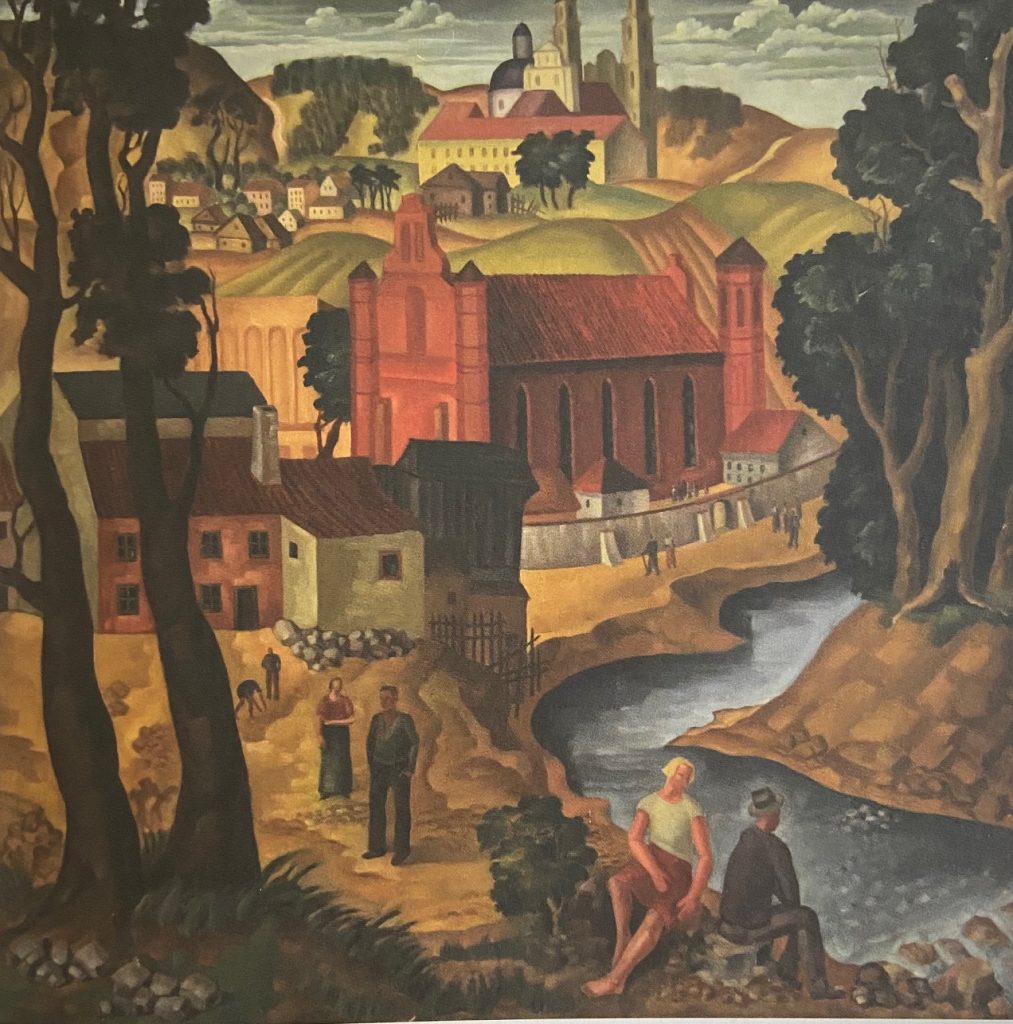
The exhibition provides plentiful evidence from the Polish, Jewish and even Lithuanian communities in the city. Were there other cultures from which it was harder to find evidence or art? I didn’t notice much or anything from the Belarusian-speaking population, for example.
The exhibition was very dense. We didn’t even include Lithuanian periodicals published in Polish Vilnius, although they are certainly very interesting not only in relation to the multiculturalism of Vilnius, but also in relation to the history of graphic design. The Belarusian segment of the population is rather well represented in the exhibition catalogue. We present two Belarusian artists working in Vilnius, who were previously very little known and had been little researched. Józef Horyd or Jazep Gorid was a prominent figure in the artistic life of the city. He is one of the creators of the original style of French Art Deco in our city. Horyd was also the author of several important interior decorative ensembles. He painted wall paintings for the Officers’ Club and the Chamber of Commerce and Industry. Unfortunately, both of these important artworks were destroyed.
The other Belarusian artist we have presented is the freak, the visionary Jazep Drazdovich. He did not fit into the general artistic life of Vilnius at all, and he didn’t try to adapt to it. Even when dedicating his treatise The Celestial Run to the University Library he wrote in Belarusian, not in Polish. His activities and artworks reflect particularly well the aspiration to divide Vilnius among separate national groups, which for many years was supported by some Vilnius residents even after they had fallen into the grip of the Soviet Union.
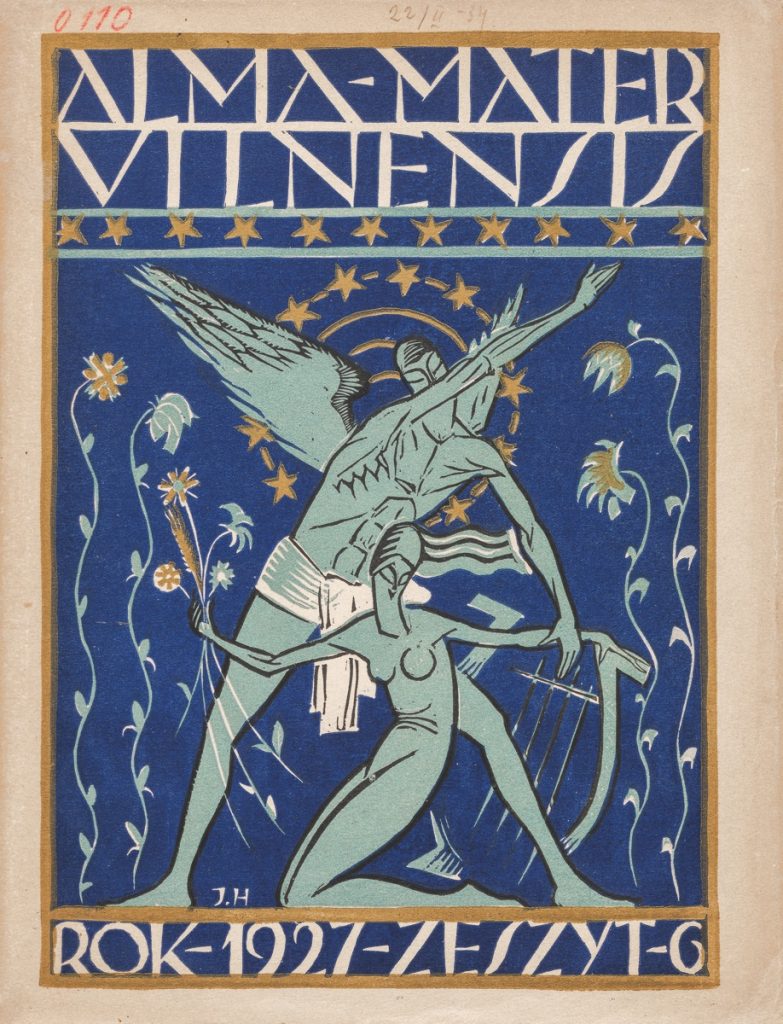
[The year] 1918 seems quite clear as a start for the exhibition, as the end of World War I – but the cut-off point of 1948, several years after the close of World War II, may be less obvious to some viewers. Why did you decide to end the exhibition in that year specifically?
When reflecting on the history of Vilnius between the wars, the usual chronological boundaries are 1918 and 1939: the end of the Great War, the beginning of the creation of a new Europe, and the outbreak of World War II, which put an end to all those hopes. However, in 1939, the Vilnius artists’ community changed only to the extent that Lithuanians started moving to Vilnius. It is true that in 1939, the Lithuanian authorities closed the Polish Stephen Bátory University with its entire Faculty of Fine Arts. However, in the autumn of 1940, a Lithuanian higher art school began to operate in its place, with several artists from the former university professors working there. The first blow to the old Vilnius art community was the Holocaust. The only survivors of the Jewish artists in Vilnius were those who managed to flee to the depths of the Soviet Union on the eve of the Nazi occupation, or who were saved by a miracle. In 1945, the exodus of Vilnius artists to Poland began. We have chosen 1948 as it was the end of this exodus.
After that, the Vilnius artists’ community changed radically. The aims and objectives of art became completely different; the Soviet art style entered into force, the development of which was closely monitored and controlled by censors. That was also the year that marked a new wave of Soviet repression, the peak of anti-Semitism, and anti-religious actions that led to the closure of most of Vilnius’s Catholic and Protestant churches and monasteries. It was the year of the ruins of Vilnius beginning to be cleared, which was accompanied by the demolition of important buildings that were still in good condition (including the Great Synagogue of Vilnius) and by the construction of new buildings all over the city, including the Old Town. A threshold date indeed. I think we have made that clear in the exhibition and its catalogue.
There are many landscapes included in the exhibition – this is a genre often taken by non-experts to be more or less representative of its subject matter, but as these show can be highly romanticised. How did the different communities – or different specific artists – picture the city, what did they prioritise?
One of the aims of the exhibition was to reveal the image of Vilnius through the views of the city. Landscape – in the truest sense of the word – is a direct portrait of the city. I think we did a good job of revealing that the inhabitants of interwar Vilnius looked at their city through the prism of nostalgia. Vilnius intellectuals and artists were convinced that an important part of their mission was to restore the former beauty and grandeur of their beloved city, which had been eroded and devastated by the Tsarist Empire’s heavy russification. Artists and photographers alike created breathtakingly beautiful panoramas of Vilnius in which these scars were not visible. The graceful silhouettes of Baroque and Gothic church towers, the red-tiled roofs of the Old Town houses are a sight to behold. There were also many images of isolated architectural monuments, and we have included them too.
But Vilnius was not only the Old Town; it was also the New Town with its historicist brick buildings, the industrial suburbs and, above all, the residential districts with their wooden houses among the trees. Not all of these neighbourhoods resembled country villages, and there were also very poor, dirty, unpleasant and unhealthy places. This side of Vilnius attracted the attention of the younger generation of artists, arousing their indignation and resistance to the injustices of the world.
Thus, in the section of portraits of Vilnius we have put together quite contrasting works, although, of course, there were many more examples of nostalgia than of a critical approach.

You include tourism brochures and posters, both for a domestic and international audience (some in French, English and German). How was Vilnius seen by people in Poland following its annexation – as somewhat exotic, or just a city like any other?
In Poland, as in Lithuania, there existed a Vilnius myth and it was rather popular. For the Poles, Vilnius was a place of Polish Romantic geniuses Adam Mickiewicz and Juliusz Słowacki. However there were not many Polish tourists in Vilnius. This could be confirmed by the fact that the Polish tourist agency Orbis had very modest premises in Vilnius. The guides we presented at the exhibition were primarily aimed at Vilnius residents themselves, as well as those living in the Vilnius area. We wanted to show that Vilnius and its surroundings were marked on Polish tourism maps, but they were very far from the main tourist routes, on the border of the country.
How many links were there between the art of the different communities represented in Vilnius? Were they influenced by each other or even in dialogue, or did they take place largely in isolation?
The artistic life of Vilnius was dominated by Polish culture. Poles, Lithuanians, Belarusians, Jews, Germans and Russians not only tried to adapt to it, they were simply immersed in it. By the way, even the surnames of the artists were altered. The Lithuanian Vladas Drėma became Władysław Dremo, the Belarusian Jazep Goryd was transformed to Józef Horyd, the Jewish Fania Lev became Fania Lewówna. All of them studied at the same Faculty of Fine Arts of Vilnius University, and all of them participated in the same exhibitions, discussions, parties. So the commonality was natural.
Differences caused by family, community or linguistic environment were also felt. There were art commissions for specific national communities, which were executed by artists belonging to those communities. For example, Belarusian literature was illustrated by the aforementioned Horyd, and covers of Lithuanian magazines were designed by Drėma. However, we did not distinguish national segments in the exhibition because we wanted to show the artistic life of Vilnius as a whole. One exception was the “wall” of Jewish art from the 1920s. In the 1920s, Jews did not yet mix with others, they worked only for their own people, they held separate exhibitions, they participated in Jewish art exhibitions in Warsaw and Berlin. By the 1930s, however, they had already integrated into the general artistic life of the city, and friendships were forming between artists. For example, not so long ago, Vladas Drėma’s daughter Gražina showed me a woodcut by the Jewish artist Fania Lev, which had been given to her mother. The dedication is written in Polish.
Drėma, who stayed in Vilnius, corresponded with at least a dozen Vilnius artists – his former colleagues – who had moved to Poland after the war. Even Lithuanian artists who had moved from Kaunas to Vilnius in 1940 managed to establish contacts with Polish artists in Vilnius. The most interesting question is how they communicated, in what language? When I started to dig deeper, I found out that many Kaunas residents spoke Polish, and from 1940 Vilnius residents started to learn Lithuanian quite actively. I remind you that we are talking about people from the art world.
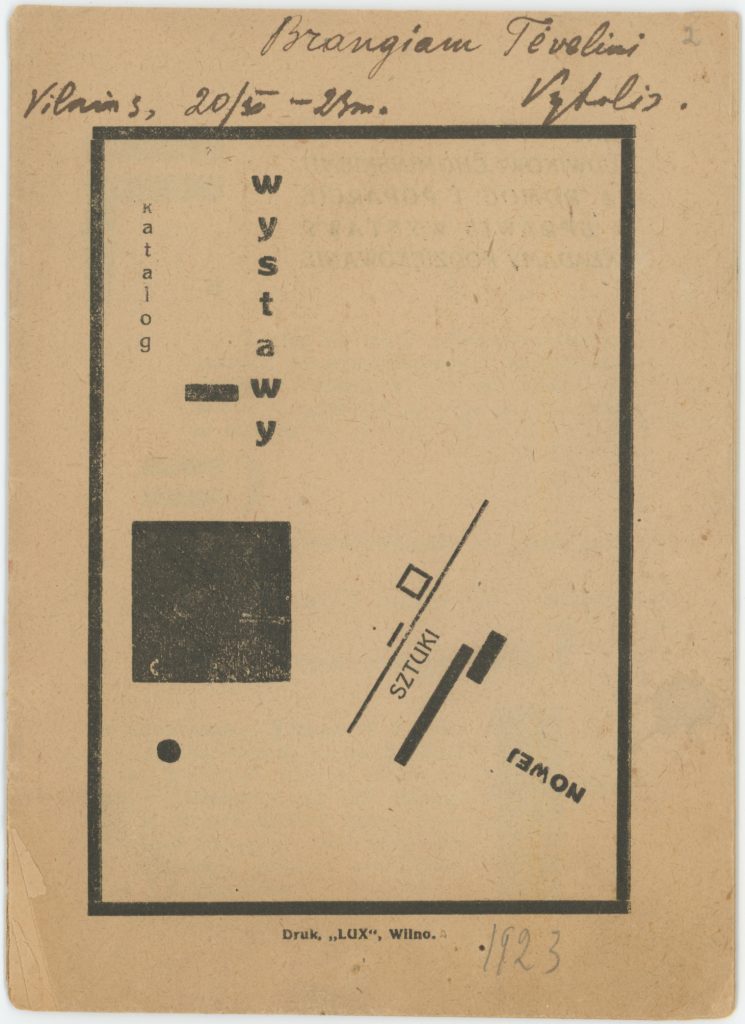
How did the repeated changes of control around the end of World War I affect art – was it possible to create much during this time period?
In a strange way, it was quite a fruitful period. Despite the tragedies of the war and the post-war hardships, the poverty, the sickness, the difficult memories, many at the time looked to the future with hope. In countries like Lithuania and Poland, it was about gaining independence, about building a state and therefore a new better life. Just a year after the war, in 1919, a university with an art faculty, closed during the Tsarist Russian era, was reopened in Vilnius. This school educated several generations of artists who, together with their teachers, formed the Vilnius School of Art, which was different from other centres of art in the region. In 1923, two artistic visionaries, the Lithuanian Vytautas Kairiūkštis and Pole Władysław Strzemiński, organised the Exhibition of New Art (Wystawa Nowej Sztuki) in Vilnius, which laid the foundations for the Polish avant-garde.
In the mid-1920s, young Vilnius Jews appeared as a separate group of talented artists. One of the most active, Moishe Vorobeichik, better known as Moï Ver, went to Dessau and joined the Bauhaus, the most modern art school in Europe, and from there went to Paris, where he became famous for his photographs.
I also very much like the views of Vilnius, painted after the war by Lithuanians and Poles, using atmospheric effects – the sun through the clouds, a rainbow after a storm – to enhance the beauty of the magnificent old city among the green hills.
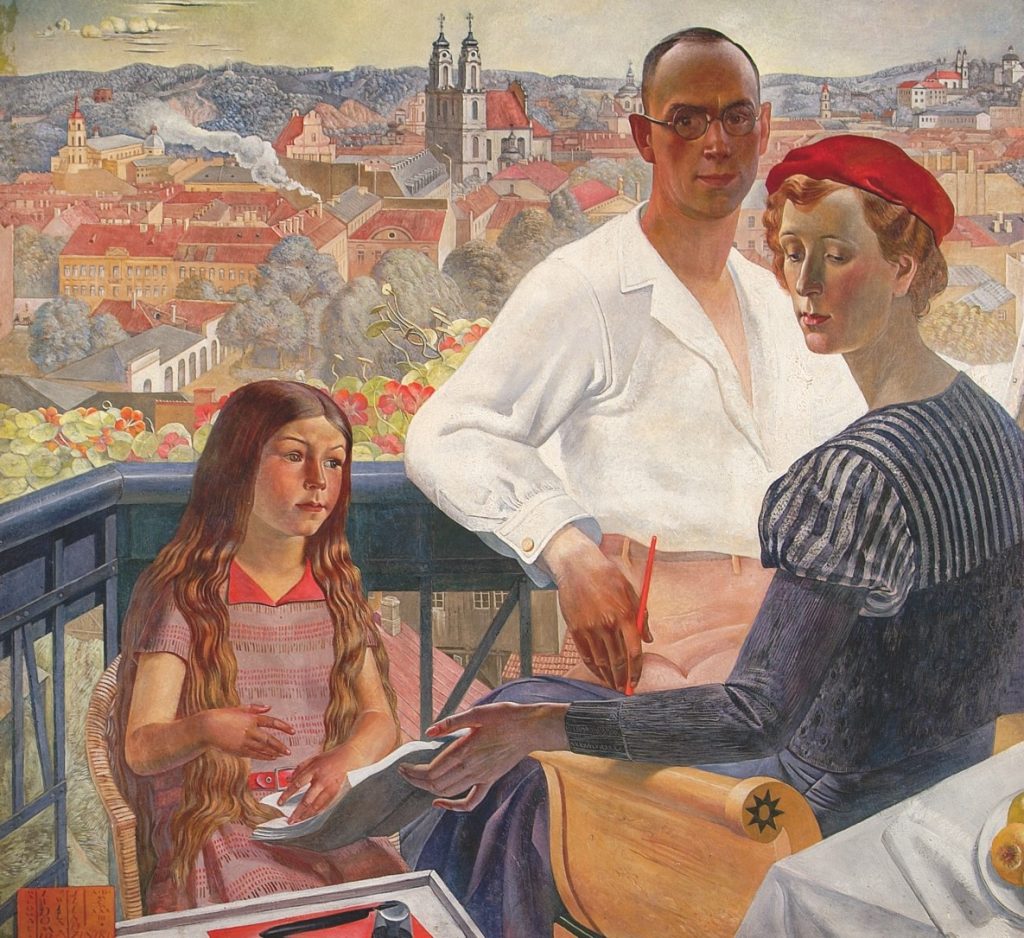
The last part of the exhibition features depictions of Vilnius by the Poles forced to leave – e.g. [artist Andrzej] Wróblewski. How connected to reality as it exists or once existed are these? Are they primarily nostalgic visions?
Yes, in the last part of the exhibition, we wanted to show that many inhabitants of Vilnius did not leave Vilnius voluntarily. Of course, at that time people realised that communist Poland would probably be better than Soviet Lithuania, but it was very difficult for them to leave their home. Of course, they longed for Vilnius, especially the artists who had spent the best years of their lives in Vilnius. Wróblewski was born and raised in Vilnius. It was the city of his childhood and adolescence. He had not yet have the chance to attach himself to Vilnius like his mother, who was also an artist, or his teachers Jerzy Hoppen or Ludomir Sleńdziński, but his early work is permeated with the trauma of war, with painful memories and experiences from the Vilnius period. Some of the themes and feelings can be understood and reconstructed reading the texts left by this extraordinarily talented and all too short-lived artist.
How much interest has there been in this period on the part of Lithuanian historians? Does the fraught history make it more difficult to research?
Recently, young people have become more and more interested in this complicated and poorly researched period – I mean the history of Vilnius in the interwar years. Accordingly, research into the history of interwar Vilnius is intensifying in all its various aspects, from the ideas and realities of industrial development and urban planning to the social engineering projects that were implemented after World War II. The most striking example of this was the so-called repatriation of Poles to their country of origin, but the industrialisation of Vilnius after World War II had an equally powerful impact on the life of the city and its citizens, changing both the local urban and social fabric. These themes are being taken up by young scholars first of all, but they are also interesting to the middle generation of historians. It seems to me that these people are no longer bothered by the issues that seemed particularly uncomfortable to previous generations of scholars. Maybe even the opposite – they are turning their gaze towards themes and problems that were previously considered untouchable.
Would you be able to single out a couple of exhibits that were particularly intriguing for you, and explain why?
For years I have been dreaming of the opportunity to show political artworks, demonstrating how both sides – Poles and Lithuanians – fiercely defended their interests and despised the enemy through art. With some trepidation we with my colleague Andrzej Szczerski exhibited Ludomir Sleńdziński’s painting Piłsudski Nearby Vilnius (1927) and the very offensive anti-Polish posters and medals by Lithuanian artist Petras Rimša.
From today’s perspective, these works are cruel and naive at the same time. And they clearly reveal that this political confrontation was a destructive, talent- and energy-wasting futile thing. No doubt, these artworks attracted a lively audience both in Poland and in Lithuania. However, visitors reacted in a very sober way: people analysed the artefacts in the historical context of their time. However, it was these works that most visitors remembered.
Among the exhibits I was particularly pleased with were some beautiful cityscapes and images of everyday life in Vilnius by the great Polish painters Tymon Niesiołowski and Ludomir Sleńdziński: a café scene, a young newspaper seller, an elegant mother with a pram by the Žaliasis (Green) Bridge. These works now belong to different collections scattered all over Poland, and we brought back them to their native city after many years. I wonder when somebody will be able to collect them together again and show them as images of a modernising Vilnius.
I am very pleased that the elegant woodcut Woman with a Hat, or in the Fabric Department by Józef Sękalski, inspired an article in the widely read Lithuanian magazine Legendos about the Jablkowski brothers’ department store in Vilnius. This was a branch of a luxurious Warsaw department store. The Vilnius branch celebrates its centenary this year. As you have already realised, the subject of the woodcut is depicted in the interior of this very shop, which is very recognisable. There are hardly any other images of the interior of the Jablkowski shop in Vilnius.
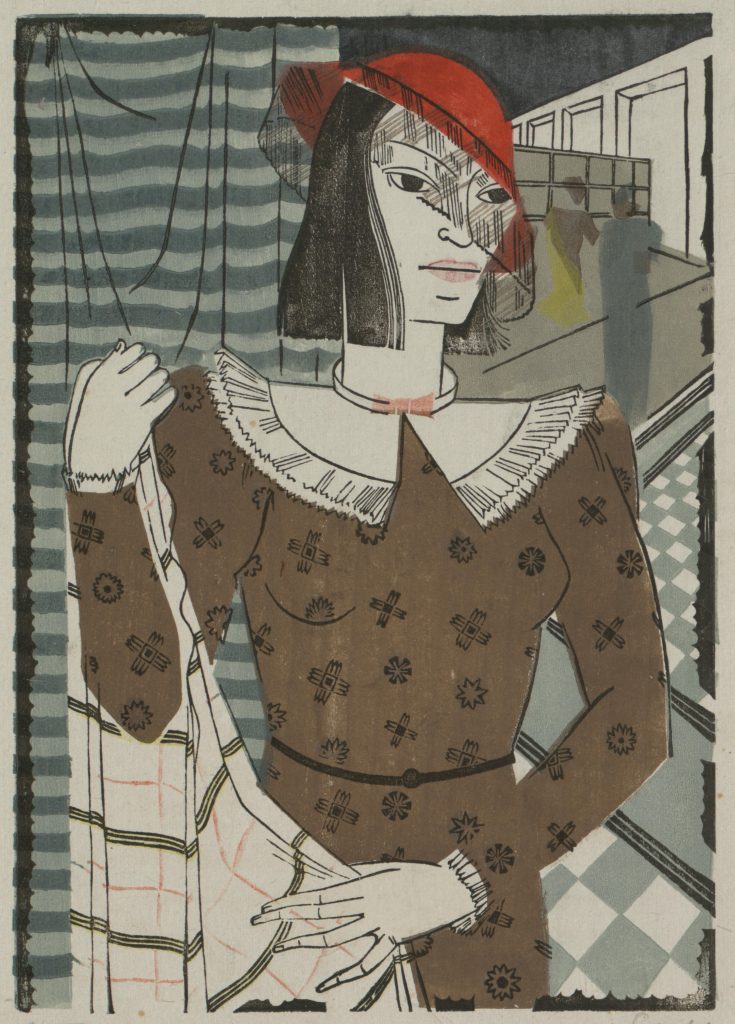
© Deep Baltic 2024. All rights reserved.
Like what Deep Baltic does? Please consider making a monthly donation – help support our writers and in-depth coverage of Estonia, Latvia and Lithuania. Find out more at our Patreon page.

